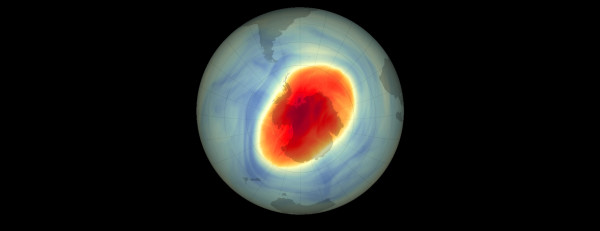Published October 16, 2023 at 4:36 p.m.
In September 2023, European scientists observed a gigantic hole in the ozone layer over the South Pole. Explanations.
The success of the Montreal Protocol
This is one of the rare environmental successes: the ozone layer over the polar regions is on the mend. In 2019, the hole over Antarctica had reached its smallest size ever measured. This is thanks, among other things, to the ban on chlorofluorocarbons (CFCs) enshrined in the Montreal Protocol of 1987. Two years later, the protocol was signed and implemented by the 195 signatory states.
Two and a half times the size of Canada
However, the hole observed on September 16 was 26 million square kilometers in size, the size of North America. The ozone layer varies over each pole depending on the season. In winter, holes form due to polar stratospheric clouds, which deplete the already limited ozone mass. In summer, however, the ozone value returns to normal. But in mid-August, the end of winter in the southern hemisphere, the ozone hole began to expand rapidly.
A Herculean volcano
The Hunga Tonga-Hunga Ha’apai volcano could be one of the culprits. Its eruption in the South Pacific sent more than 50 million tons of water vapor into the stratosphere. El Niño may also have played a role in changing temperatures around the poles. Fortunately, the ozone layer is expected to return to normal by 2050, according to experts at the European Space Agency.
Ozone: vital
All life on earth is protected by the ozone layer. This acts as an invisible filter that protects all life forms from excessive exposure to the sun’s harmful UV rays. Most of the UV radiation is absorbed by the ozone and therefore cannot reach the earth’s surface. Without the protective effect of ozone, life on Earth would not have developed as it did.

